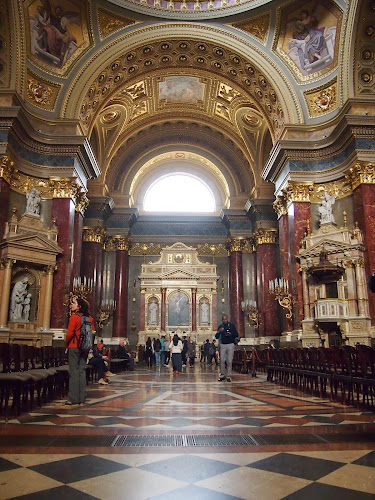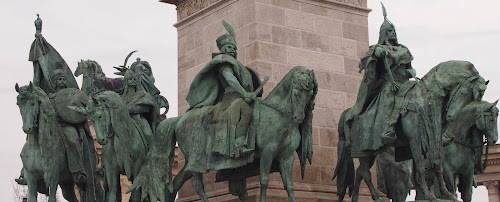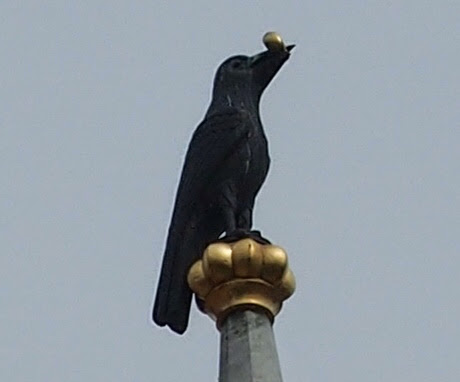We started our city tour in the flat land of Pest, built up in the nineteenth century from a sleepy village, with drive-bys of a number of sites that we later doubled back to visit.
The neo-moorish Great Synangogue, reputed to be the third largest in the world, was closed for a wedding when we ventured there in the afternoon.
We had better luck at St. Stephen’s Basillica which was, as you can see, drop dead beautiful. We went into the attached Holy Right Hand chapel to take a look at (you got it) the late King Stephen’s hand, but you couldn’t see much. King Stephen was the first King of Hungary, crowned with the Pope’s blessing in 1000.
Hero’s Square, built on the Pest side in 1896 as part of the millenial celebration of the Magyar tribes conquering the Carpathian Basin in 896, features the leaders of the seven tribes.
Buda developed much earlier into a city, being hilly and offering a good defensive location for a castle and then a palace. As is the case in much of Europe, the castle area was almost completely destroyed and has been rebuilt, sometimes multiple times. This facade does, however, date from the fourteenth century and has been restored. Must have been colorful neighborhood.
Fifteenth century King Matthias built Our Lady Church, commonly known as Matthias church, after he was imprisoned by his rival for the crown. A raven took his ring to his mother from the prison to assure her that he was still alive. Matthias church has undergone many changes over the centuries, including serving as a mosque during the 150 years of Ottoman rule. Hungarians joke that if the Ottomans stayed for 150 years, the Austrians stayed for 400 years, and the Russians stayed for 50 years, tourists should stay for at least one day longer.
The Fishermen’s Bastion provides a magnificent view over Buda and Pest. The seven towers in Magyar style symbolize the seven founding tribes. It’s King Stephen looking back towards Matthias church. It all makes us wonder if we should change our minds about no longer following Game of Thrones.
Back in Pest, lunch was at DiVin Porcello, Friends of Ham. As you can see, Jim had the Hungarian ham plate and the assorted pickles. It was amazing. The pickles on top on the right seemed to be eggplant. Wow, was that good!
Dinner was at Menza. We both followed goulash soup (a must in Hungary) with roast chicken and beet root risotto. The chicken was perfectly done and who knew to put beets in risotto?














